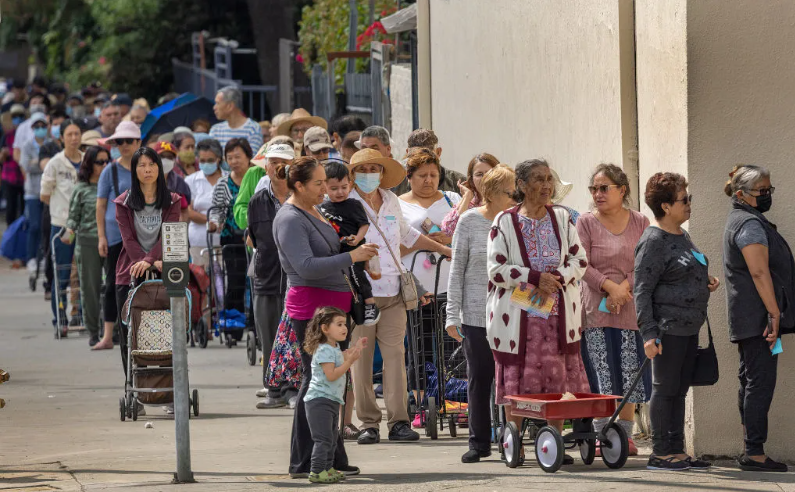
A recent major study has disclosed that over 1 million children in the UK experienced destitution in the past year, which means their families couldn't provide them with adequate food, clothing, hygiene, or warmth. "What’s destitution like? A complete nightmare!" says Clare Willsher, who lives with her husband and two teenage boys in Bexleyheath, south-east London. She is quite matter-of-fact about it: life has often been pretty tough, but never this tough.
Soaring energy and food costs over the last two years coincided with her husband getting cancer and having to give up work. They had personal debts, and their household income shrank just as their outgoings went through the roof. "Universal credit pays the rent on our private rented home, but the basic allowance meant for living costs will not stretch to a whole month. The family gets disability benefits for the boys, without which, she says, they would be totally scuppered."
Putting food on the family table takes time and ingenuity. "A weekly grocery budget of £35 has to be supplemented with trips to food banks. Some weeks, when other bills have to be paid, she has had as little as £10 for food." Clare and her husband regularly skip meals – "we never have three meals a day" – to ensure the boys always have enough to eat. "I often wake up hungry at three in the morning," she says.
Last winter was miserable, she recalls, as the cost of energy meant they could rarely afford to put the heating on, even when it was freezing. "Sometimes they switched it on because it was the only way to dry the boys’ school uniforms." Clare describes the inability to afford things they used to take for granted as demoralizing. She and her husband recently went out for a token drink to celebrate their wedding anniversary. "It left us skint," she reflects, with a hint of regret.
This increase in extreme poverty is attributed to a doubling of destitution rates in the last five years due to benefit cuts and rising living expenses, forcing struggling households to rely more on charity assistance. "The government is not helpless to act; it is choosing not to," said JRF's CEO, Paul Kissack. "Turning the tide on destitution is an urgent moral mission, which speaks to our basic humanity as a country, and we need political leadership for that mission."
Professor Suzanne Fitzpatrick from Heriot-Watt University, a co-author of the study, called the rising destitution "morally reprehensible" and urged immediate action from all levels of government. "There must be immediate action from all levels of government to tackle this social emergency," she said.
The study defined destitution as the inability to meet basic physical needs for warmth, cleanliness, food, and shelter due to insufficient income or resources. The study also highlighted the erosion of state support for those in severe hardship and their growing reliance on charity and informal help, such as food banks.
The study recommended that political parties commit to a plan to eliminate destitution, including revising benefit rates to ensure that universal credit is sufficient to prevent severe hardship. However, a government spokesperson emphasized their efforts to address poverty and increase support for families in need through various measures.
In addition to that, the poverty rate in the United States saw its most significant one-year increase in history, with 12.4% of Americans living in poverty in 2022, up from 7.4% in 2021. Child poverty also more than doubled, rising to 12.4% from 5.2% the previous year. Safety net programs, such as the expanded child tax credit, had previously made substantial strides in reducing poverty over the past two years. However, the expiration of these programs, combined with inflation and increased living costs, contributed to the alarming increase in poverty rates.
California, Florida, and Mississippi were highlighted as states with the highest poverty rates in the United States, each facing distinct economic challenges. The data revealed that child poverty in 2022 would have been much lower if the expanded Child Tax Credit had been extended.
These increases in poverty have far-reaching consequences on the affected populations, encompassing various aspects of life, including health, education, and overall well-being. The data underscores the impact of government policies and support programs on poverty rates and emphasizes the importance of sustained efforts to combat this pressing issue. It also highlights the critical role of research and advocacy in shedding light on the challenges faced by disadvantaged communities and the necessity of both short-term and long-term solutions to address the root causes of poverty.
